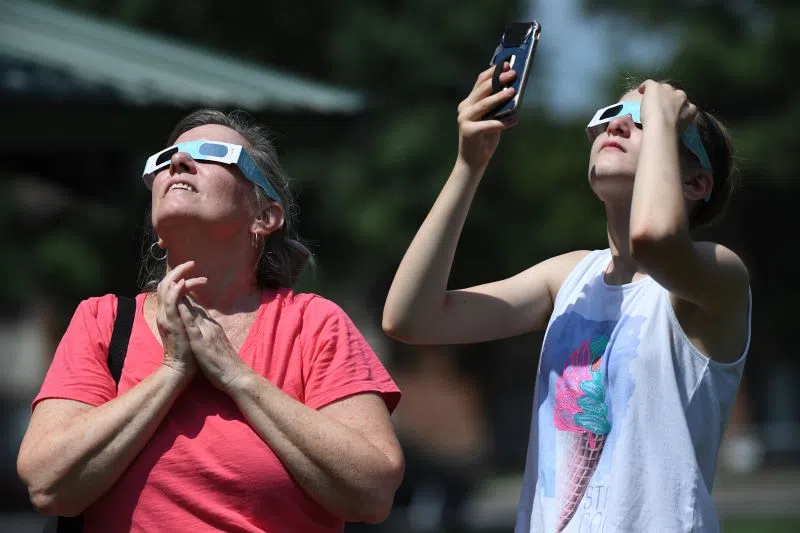The Manitoba Optometrists Association issued a reminder today for people to take precautions before observing next week’s partial solar eclipse. The solar eclipse is a rare event that will be visible across North America on Monday April 8, 2024 (weather permitting).
While some Canadian regions will see a full eclipse, which occurs when the moon passes between the Sun and the Earth, Manitobans will see a partial eclipse (70%).
“A solar eclipse is an exciting astronomical event, but people need to take care not to look at it directly,” said Dr. Irene Mestito-Dao, President of the Manitoba Association of Optometrists. “You can cause irreparable damage to your eyes without even knowing it is occurring. If you want to view an eclipse, you must use the proper eyewear.”
The only safe way to look directly at the sun is through specialized solar filters (solar eclipse glasses). This is true during a partial eclipse or on any regular day when the sun is visible. Solar eclipse glasses must meet ISO 12312-2 international standard. People wishing to purchase solar eclipse glasses should ensure they meet that standard.
Manitoba optometrists remind Manitobans that it is never safe to look directly at the sun. Do not look at the eclipse without ISO-certified solar filters/eclipse glasses. There will be no time when it is safe to view the eclipse without eclipse glasses.
To safely view the eclipse:
-Before the eclipse, check your eclipse lenses carefully. If they are scratched or damaged, they are not safe to use.
-Before looking up at the sun, put on your eclipse glasses and don’t remove them until after you’ve looked away.
-Supervise children using eclipse glasses to make sure the shades are undamaged, worn correctly and worn at all times while viewing the sun and partially-eclipsed sun.
-Never look at the sun or partially-eclipsed sun through sunglasses — even if your sunglasses provide 100% UVA and UVB protection, they do not protect your eyes adequately when looking directly at the sun.
-Never look at the sun or partially-eclipsed sun through an unfiltered camera, telescope, binoculars or other device. Consult an expert astronomer before using a specialized solar filter on a device.
Solar Retinopathy
Staring at the sun without protection can result in solar retinopathy, which is damage to your retina from the sun. The retina is located at the back of your eye. Its job is to receive images that are brought into focus by the front of the eye and to pass those images along the optic nerve to your brain. Because there are no pain receptors in the retina, this damage can occur without any sensation of pain and you may not realize it’s happening until it’s too late. Visual symptoms may not be noticed for several hours after the damage has been done. Symptoms may include: a blind spot, blurry vision, visual distortion, sore eyes and/or watery eyes. Damage may be temporary or permanent. Visit your optometrist immediately if an accident happens.
Protecting your eyes from UV radiation every day
An eclipse is an unusual time when we are more conscious of protecting our eyes. It’s also important to protect your eyes from the sun every day. Cumulative daily UV exposure can cause conditions such as cataracts, macular degeneration, photokeratitis (sunburn of the cornea) and others. Children are particularly vulnerable to UV damage because they spend more time outdoors and their eyes have less capability to filter out the damaging UV.
Protect your eyes every day by wearing sunglasses that provide 100% UVA and UVB protection (even better if the sunglasses have large lenses) and a hat that shades your eyes. Ask your optometrist for recommendations.
Read more about the eclipse and eye health on our website at 2024 Solar Eclipse | Manitoba Association of Optometrists
For more information, please visit the Manitoba Museum website at 2024 Solar Eclipse Information – Manitoba Museum or the Canada.ca website at Total solar eclipse of April 8, 2024 | Canadian Space Agency (asc-csa.gc.ca)










